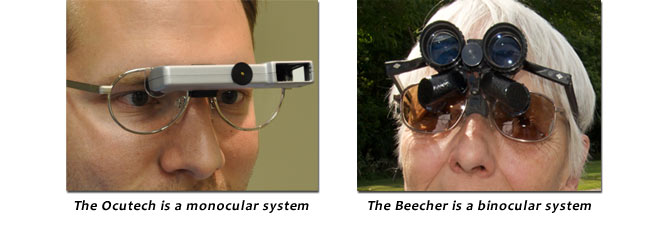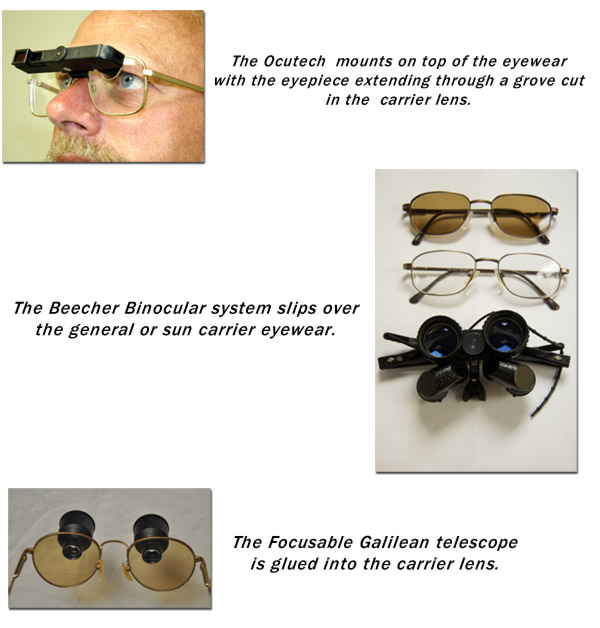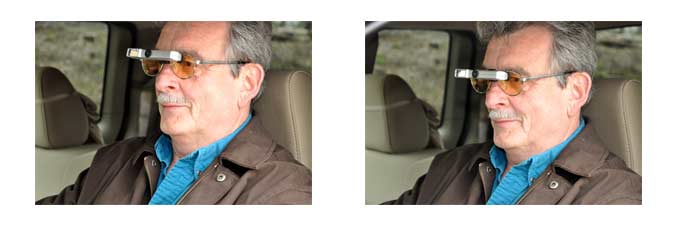“For people without disabilities, technology makes things easier; for people with disabilities, technology makes things possible”
- IBM, 1991
What is a Bioptic?
Bioptic systems combine prescription eyewear with a small telescopic system. The eyewear lens portion is deemed the carrier, which provides general vision while the telescope aids in quick spotting of detail for the visually impaired patient. The telescope can be fabricated for one or both eyes.

The telescope may be permanently fused into the lens, mounted above the eyewear or pass through a groove cut in the carrier lens. It can also be intermittently mounted over the eyewear.

The telescopic portions are commonly fabricated in powers from 2.2X to 5.5X. Higher power telescopes of the same type will generally have smaller the fields of view. Some states limit the magnification power of the telescopic portion. In Indiana, we can use any telescopic system to 4X plus the 5.5X Beecher Mirage.
There are two basic types of telescopes, Keplerian and Galilean. Both are used in bioptic systems. The Keplerian telescope was invented by Johannes Kepler in 1611, as an improvement over the Galilean telescope invented by Galileo in 1609. Keplerian telescopes have wider fields of view than the same power Galilean telescope.

The telescopic portion must be mounted slightly tilted up so that as the patient makes a slight head tilt downward the telescope will be straight down the road.

During the examination, the doctor will test the patient with bioptic systems to decide on the, type of system, power and other features that will provide the safest and most efficient system for each patient. If you have question on bioptics or bioptic driving, please contact our office.
The Low Vision Centers of Indiana
Richard L. Windsor O.D., F.A.A.O., D.P.N.A.P.
Craig Allen Ford O.D., F.A.A.O.
Laura Kathleen Windsor. O.D., F.A.A.O.
